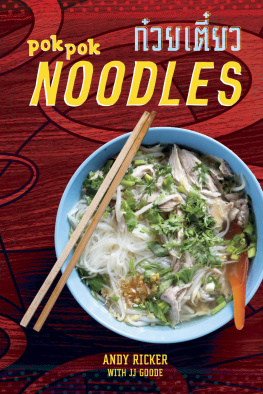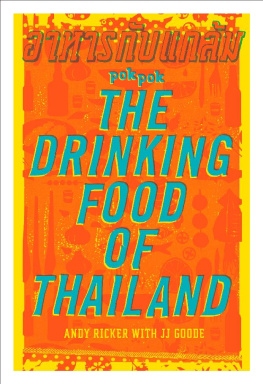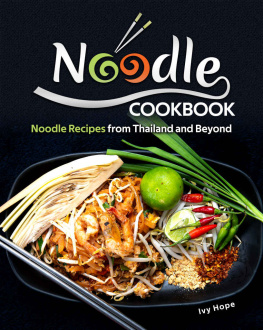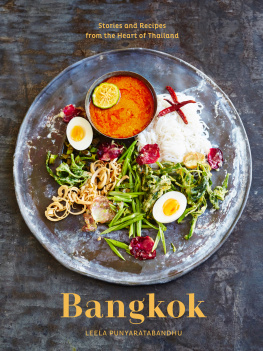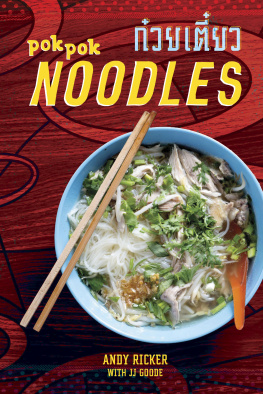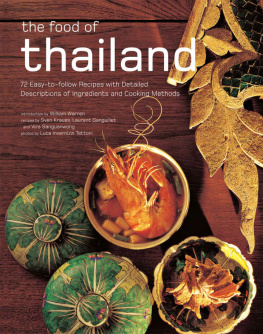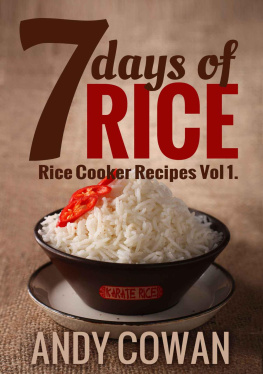Andy Ricker - Recipes from Thailand and Beyond
Here you can read online Andy Ricker - Recipes from Thailand and Beyond full text of the book (entire story) in english for free. Download pdf and epub, get meaning, cover and reviews about this ebook. year: 2019, publisher: Potter/Ten Speed/Harmony/Rodale, genre: Home and family. Description of the work, (preface) as well as reviews are available. Best literature library LitArk.com created for fans of good reading and offers a wide selection of genres:
Romance novel
Science fiction
Adventure
Detective
Science
History
Home and family
Prose
Art
Politics
Computer
Non-fiction
Religion
Business
Children
Humor
Choose a favorite category and find really read worthwhile books. Enjoy immersion in the world of imagination, feel the emotions of the characters or learn something new for yourself, make an fascinating discovery.
- Book:Recipes from Thailand and Beyond
- Author:
- Publisher:Potter/Ten Speed/Harmony/Rodale
- Genre:
- Year:2019
- Rating:4 / 5
- Favourites:Add to favourites
- Your mark:
- 80
- 1
- 2
- 3
- 4
- 5
Recipes from Thailand and Beyond: summary, description and annotation
We offer to read an annotation, description, summary or preface (depends on what the author of the book "Recipes from Thailand and Beyond" wrote himself). If you haven't found the necessary information about the book — write in the comments, we will try to find it.
Andy Ricker: author's other books
Who wrote Recipes from Thailand and Beyond? Find out the surname, the name of the author of the book and a list of all author's works by series.
Recipes from Thailand and Beyond — read online for free the complete book (whole text) full work
Below is the text of the book, divided by pages. System saving the place of the last page read, allows you to conveniently read the book "Recipes from Thailand and Beyond" online for free, without having to search again every time where you left off. Put a bookmark, and you can go to the page where you finished reading at any time.
Font size:
Interval:
Bookmark:
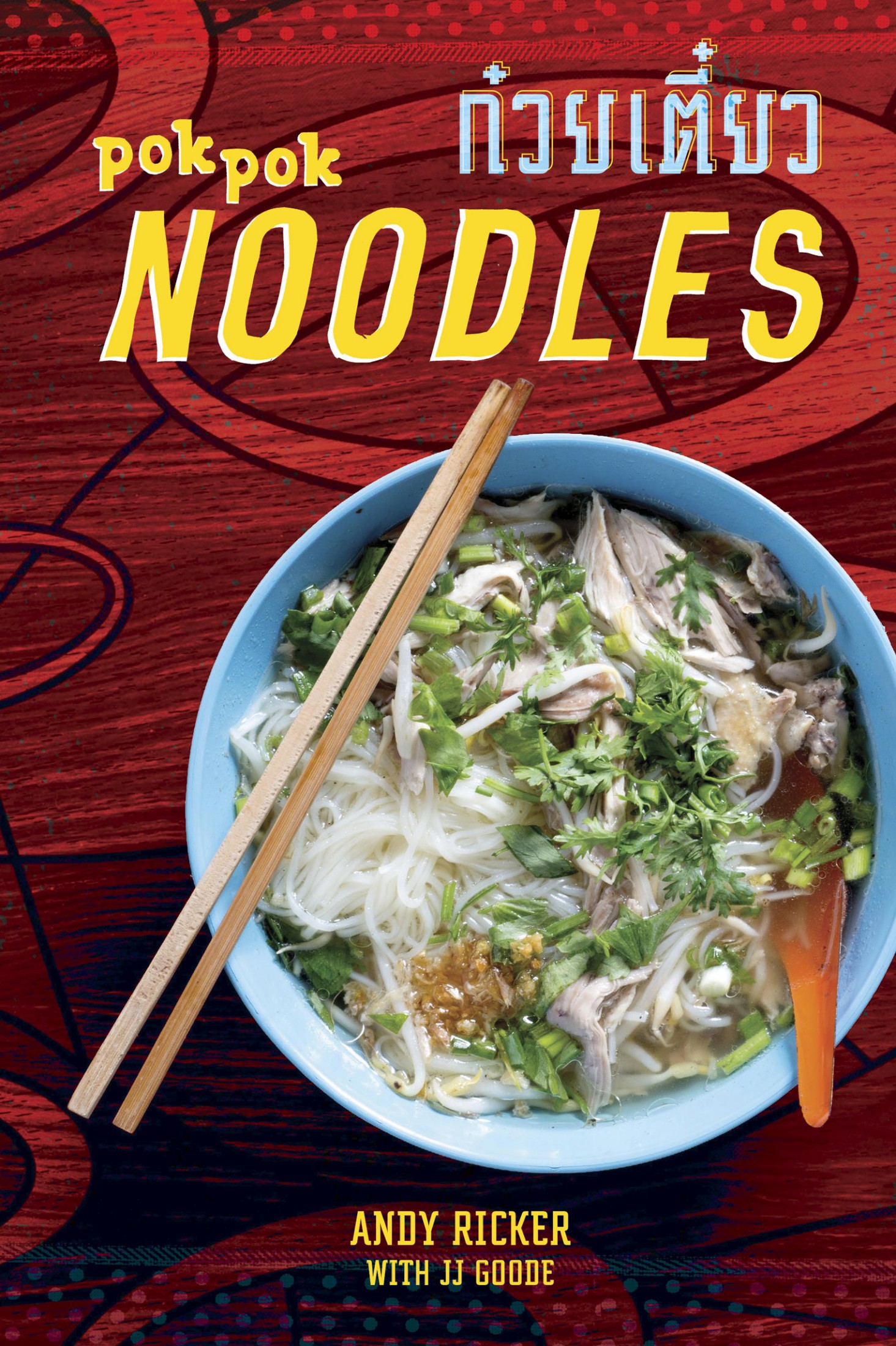
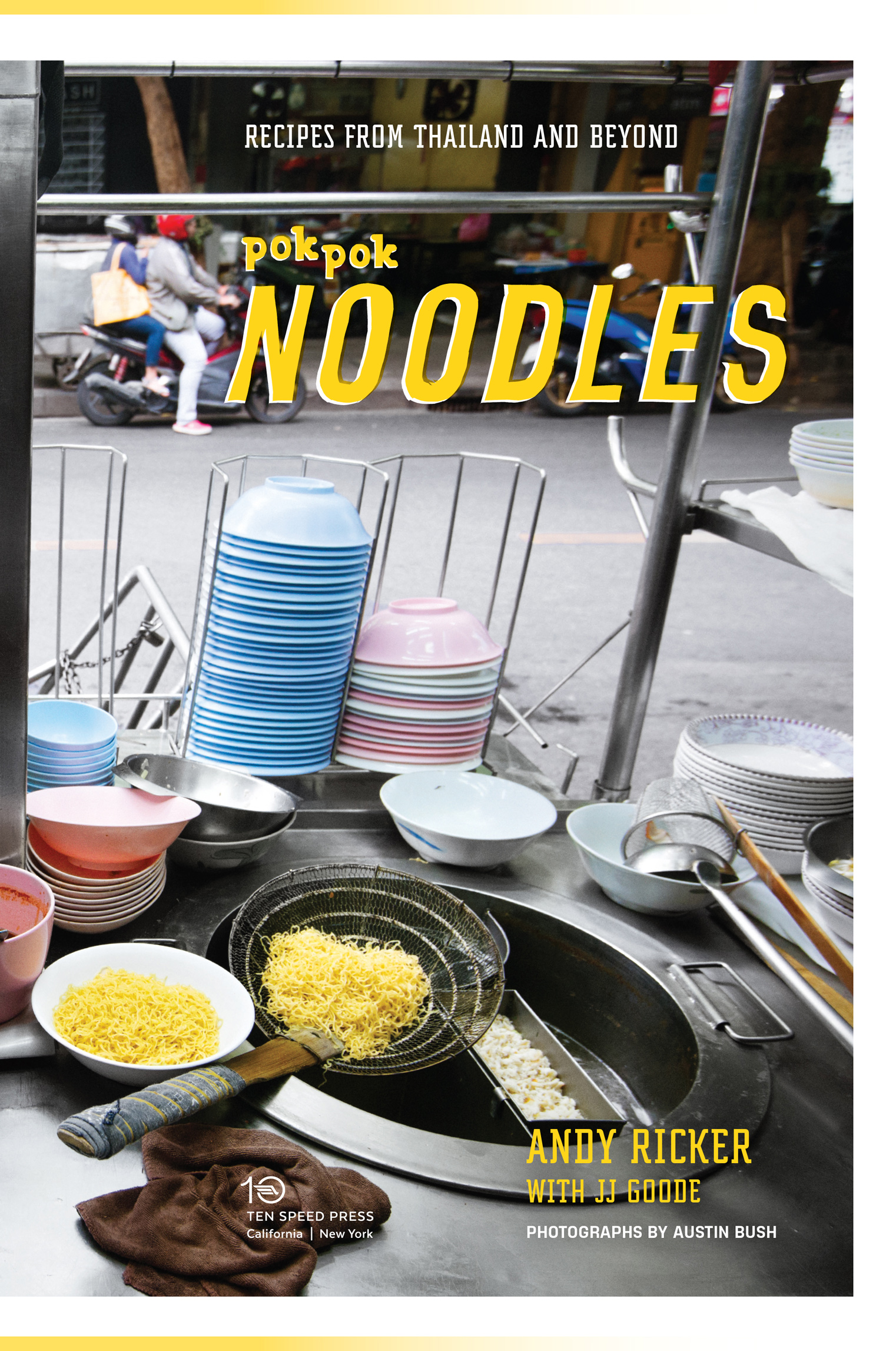
Text copyright 2019 by Andy Ricker with JJ Goode.
Photographs copyright 2019 by Austin Bush.
All rights reserved.
Published in the United States by Ten Speed Press, an imprint of the Crown Publishing Group, a division of Penguin Random House LLC, New York.
www.crownpublishing.com
www.tenspeed.com
Ten Speed Press and the Ten Speed Press colophon are registered trademarks of Penguin Random House LLC.
Library of Congress Cataloging-in-Publication Data
Names: Ricker, Andy, author. | Goode, J. J., author.
Title: Pok Pok noodles : recipes from Thailand and beyond / Andy Ricker with JJ Goode.
Description: California : Ten Speed Press, [2019] | Includes index.
Identifiers: LCCN 2018046259
Subjects: LCSH: Cooking, Thai. | Pok Pok (Restaurant) | LCGFT: Cookbooks.
Classification: LCC TX724.5.T5 R5325 2019 | DDC 641.59593dc23
LC record available at https://lccn.loc.gov/2018046259
Hardcover ISBN9781607747758
Ebook ISBN9781607747765
v5.3.2
prh
Contents
THAILANDS INDIGENOUS NOODLE
NOODLE SOUPS
FRIED NOODLES
OTHER NOODLE DISHES
Not Noodles
SUNDRIES
DRINKS
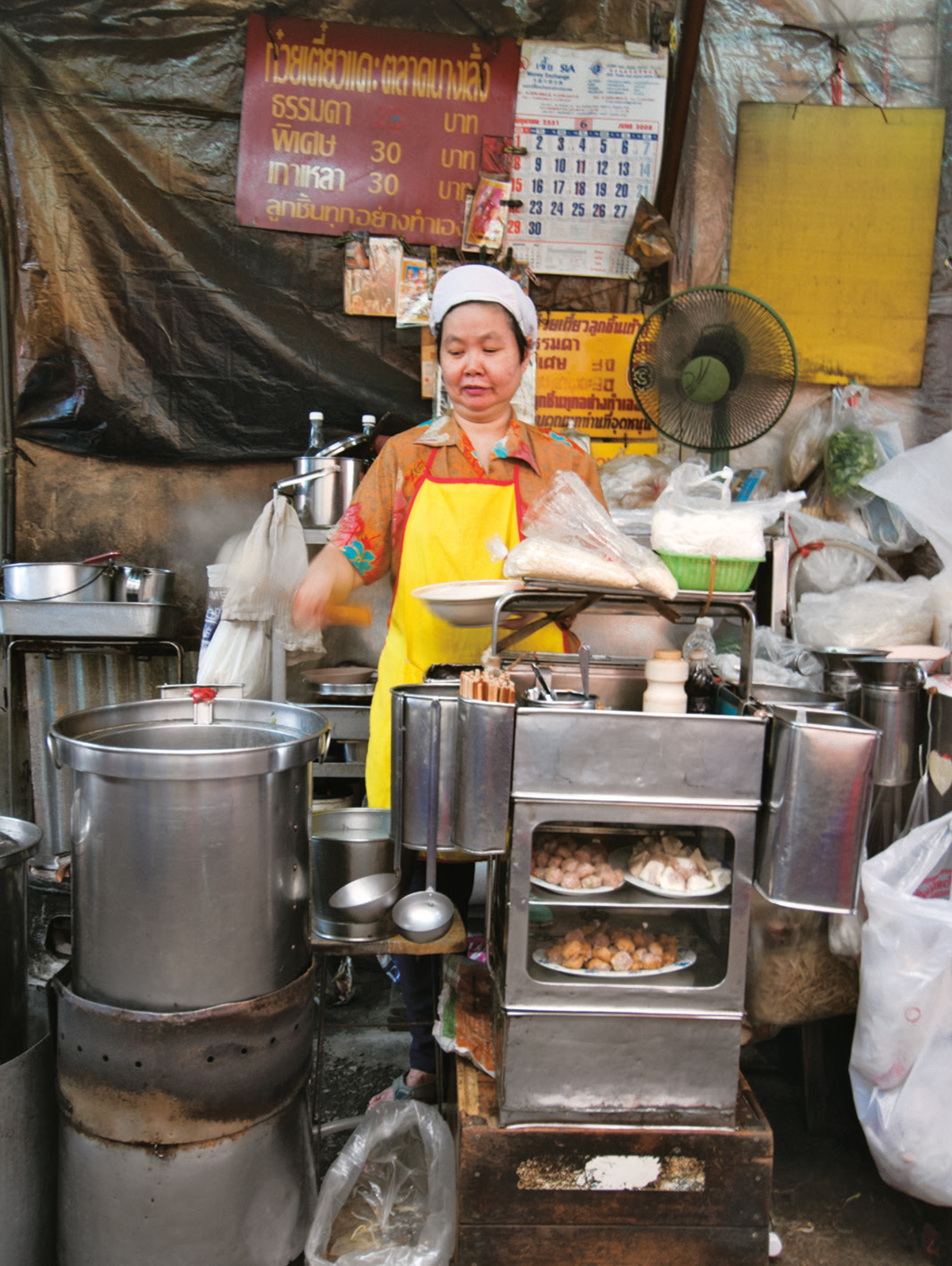
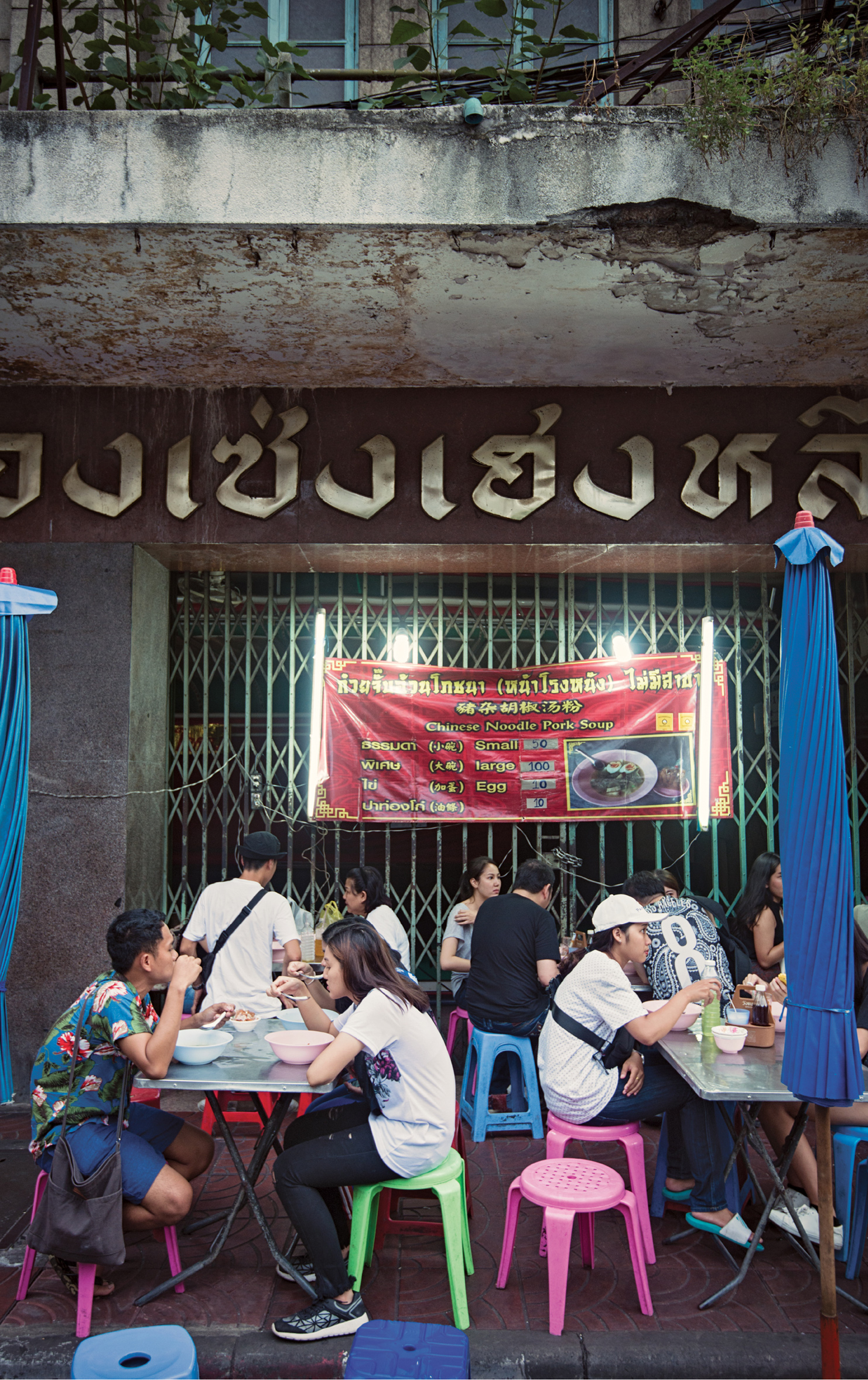
Introduction
When you go to Thailand as a tourist, the food thrills you and confounds you. The streets teem with vendors manning carts, presiding over screaming-hot woks, and hawking unfamiliar fruit. Food is everywhere. Its on every corner and down every alley. Your options seem infinite, until you remember your limitations: You cant speak the language. You cant read the signs. You can hardly identify whats on offer, since it all looks so different from the Thai food back home.
Thats how it was for me early on. Back in the early 90s, I was walking the streets of Bangkok, wide-eyed and hunting for lunch. And like so many travelers before and after me, I took comfort in noodles.
I spotted a typical operation: a cluster of folding tables and plastic stools colonizing a street corner, with umbrellas set up for relief from the sun. I approached the guy in charge, who stood beside a steaming vat of broth and behind a sort of rickety display case, inside of which a few cooked chickens were hung. A pile of clear plastic bags contained noodles of various shapes and sizes. I ordered by pointing, sat down on one of the stools, and, in no time, was staring down at a bowl of kuaytiaw naam kaiessentially, chicken noodle soup.
Of course, this wasnt the chicken noodle soup Id grown up eating. Instead, I was confronted with a clean, mild broth infused with ginger, green onion, and cilantro; a tangle of slightly chewy rice noodles; and a dose of chopped Chinese celery, fried garlic, and bean sprouts. Although I didnt realize it yet, as I sat on that street corner, plowing through my bowl and watching the city rush by, I had hit upon the formula that would later make my restaurant Pok Pok a success. This bowl of noodles occupied that sweet spot between familiar and novel. Give diners food that both satisfies and thrills, and they will come.
Since then, my travels in Thailand have revealed an entire world of noodles that I didnt know existed. I ate brothless bowls of fresh, wide rice noodles topped with stewed beef at roadside restaurants outside of Chiang Mai. I wandered alleys in Bangkoks Chinatown in search of kuay chap, peppery broth filled with tubular noodles and pork offal, and kuaytiaw khua kai, fresh rice noodles fried in a wok with chicken and pickled cuttlefish. I sampled the finest kuaytiaw sukothai in all of Sukothai and the best kuaytiaw reua (boat noodles) in Ayutthaya, where it was once sold by hawkers from vessels floating in the canals that lead down the Chao Phraya River to Bangkok.
As I tucked into bowls, I dug into history as well. I learned that most noodle dishes in Thailand are of Chinese origin, popularized by people who are Thai in nationality but ethnically Chinese. Around the ends of the seventeenth and nineteenth centuries, two major influxes of are emigrants from southern China, specifically the Teochew and Hokkien peoples, brought people with an affection for noodles. And so these new residents began serving them within their communities and later outside of them. By the turn of the twentieth century, the audience expanded, particularly in rapidly modernizing urban centers such as Bangkok, where the pace of life forced working folks to seek meals away from the traditional home kitchen.
Gradually, Thai cooks tweaked these dishes to appeal to local palates until they became, more or less, Thai, crossing the illusory lines that separate the vast web of cultures into discrete pieces. And so noodles joined the litany of foreign influences and ingredientsfrom the technique of stir-frying (also from China) to chiles (from the New World via Portuguese missionaries) to dried spices such as coriander and cumin (from India)that Thai cooks have integrated into the countrys culinary repertoire. Those adaptations might be as simple as adding ingredients such as galangal and lemongrass to pots of pork, simmering, in Chinese fashion, with star anise and rock sugar, and using the resulting stew to crown bowls of rice noodles. Or it could be serving a clay pot of glass noodles, shrimp, and pork belly with a tart, fiery chile dipping sauce.
I also found out that Thailand has an indigenous noodle called khanom jiin (see ). I visited village factories that produce the thin, slightly sour strands made from fermented rice-flour batter that are sold in skeins, like yarn. I frequented market stalls that serve them topped with curries and sauces.
As I ate, read, and inquired, I began to understand the place of noodles within Thai cuisine. Although many Thai foods are mistakenly equated with street food, noodles are indeed the quintessential example. They are the stuff of curbside vendors operating with little more than a wok or pair of pots, even if those cooks often eventually move on to brick-and-mortar locations.
These enterprises usually specialize in a certain dish, a laserlike focus born mostly of kitchen constraints: If your shop has only two pots, one for bubbling broth and one for boiling water, youre probably not going to serve both boat noodles and curried noodles. If you have just one wok and limited storage, you probably wouldnt offer both phat si ew and kuaytiaw khua kai. (You might, however, offer lat na, since it shares main ingredients with the former.) Specialization often breeds expertise. The best boat-noodle vendors are so good in part because they have made one thing and one thing only for decades.
Sadly, as the pressure of modern life impinges on vendors in Thailand, the old way of making noodle dishes is slowly dying. Buying a franchiseand, yes, many of the carts you see lining the streets of Thailand are actually franchisesoffers a proven recipe, brand recognition, and a built-in customer base that guarantees at least a modicum of business as long as the location is decent. Purchasing ready-made broth, premade pork balls, and seasonings from food conglomerates saves both money and time. The more vendors take this route, the more the tastes of their customers change, especially those of the younger generation, their appetites bending toward franchise recipes and processed foods. Luckily, some decades- or generations-old vendors still carry on their familial traditions and show no signs of changing. Their places are the ones I seek out, give my custom to, and champion however possible. The recipes in this book pay homage to these dedicated heritage cooks and food makers.
Font size:
Interval:
Bookmark:
Similar books «Recipes from Thailand and Beyond»
Look at similar books to Recipes from Thailand and Beyond. We have selected literature similar in name and meaning in the hope of providing readers with more options to find new, interesting, not yet read works.
Discussion, reviews of the book Recipes from Thailand and Beyond and just readers' own opinions. Leave your comments, write what you think about the work, its meaning or the main characters. Specify what exactly you liked and what you didn't like, and why you think so.

